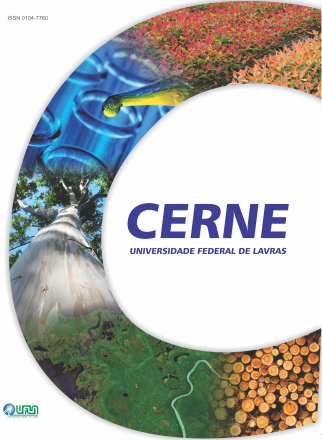TÉCNICA ALTERNATIVA PARA AVALIAÇÃO DE PERDA DE RENDIMENTO EM PLANTAS MODERNAS DE BRANQUEAMENTO
Cerne
TÉCNICA ALTERNATIVA PARA AVALIAÇÃO DE PERDA DE RENDIMENTO EM PLANTAS MODERNAS DE BRANQUEAMENTO
Autor Correspondente: Dalton Longue Júnior | [email protected]
Palavras-chave: COT, DQO, rendimento, branqueamento
Resumos Cadastrados
Resumo Português:
Neste estudo, uma técnica alternativa de medição de perda de rendimento, baseada na análise do carbono orgânico total
(COT) dos filtrados do branqueamento, é apresentada e discutida. Polpa kraft de eucalipto pré-deslignificada com oxigênio foi
branqueada pelas sequências DHT(EP)D, D(EP)DD e D(EP)DP, sendo os rendimentos gravimétricos de cada estágio determinados
com 10 repetições. Os filtrados de tais tratamentos foram analisados quanto ao COT e DQO. Correlações foram estabelecidas entre
os três métodos de medição de rendimento (gravimétrico, DQO e COT). As perdas de rendimento no estágio DHT foram mais
acentuadas que no estágio D0, sendo que essas perdas são recuperadas nos estágios subsequentes da sequência de branqueamento.
As perdas de rendimento nas sequências de branqueamento diminuem com o avanço dos estágios (D0,DHT>(EP)>D1>P>D2). A
perda de rendimento aumentou com o aumento do fator kappa no primeiro estágio de branqueamento e com aumento da temperatura
do estágio (EP). O estágio P final resultou em maiores perdas de rendimento que o estágio D final. A perda de rendimento aumenta
com o ganho de alvura no branqueamento. As perdas de rendimento medidas pelo método COT apresentaram menor amplitude de
variação em relação aos métodos gravimétricos e DQO, e a equação linear obtida da relação funcional COTxgravimétrico
apresentou o melhor ajuste (R2=97,27%). As perdas totais de rendimento durante o branqueamento foram da ordem de 4-5%,
dependendo da sequência e condições operacionais do branqueamento.
Resumo Inglês:
In this study an alternative technique is presented and discussed for measuring yield loss based on the analysis of total
organic carbon (TOC) in bleaching filtrates. Oxygen predelignified eucalyptus kraft pulp was subjected to the DHT(EP)D, D(EP)DD
and D(EP)DP bleaching sequences and the gravimetric yield of each stage was determined, with 10 replicates. Then the filtrates were
analyzed for TOC and COD. Correlations were established among the three measurement methods (gravimetric, COD and TOC).
Yield losses in the DHT stage were more accentuated than in the D0 stage, these losses being recovered in subsequent stages of the
bleaching sequence. Yield loss decreased with each advancing stage of the bleaching sequences (D0,DHT>(EP)>D1>P>D2). Yield loss
increased with higher kappa factors in the first bleaching stage and with higher temperature in the (EP) stage. The final P stage resulted
in greater yield losses than the final D stage. Yield loss intensifies with gain in brightness from bleaching. Yield losses as measured by
the TOC method revealed a narrower range of variation in relation to the gravimetric and COD methods, and the linear equation
derived for the TOC vs. gravimetric yield relationship provided the best fit (R2=97.27%). Overall yield losses throughout were in the
range of 4-5%, depending on the bleaching sequence and operating conditions.

